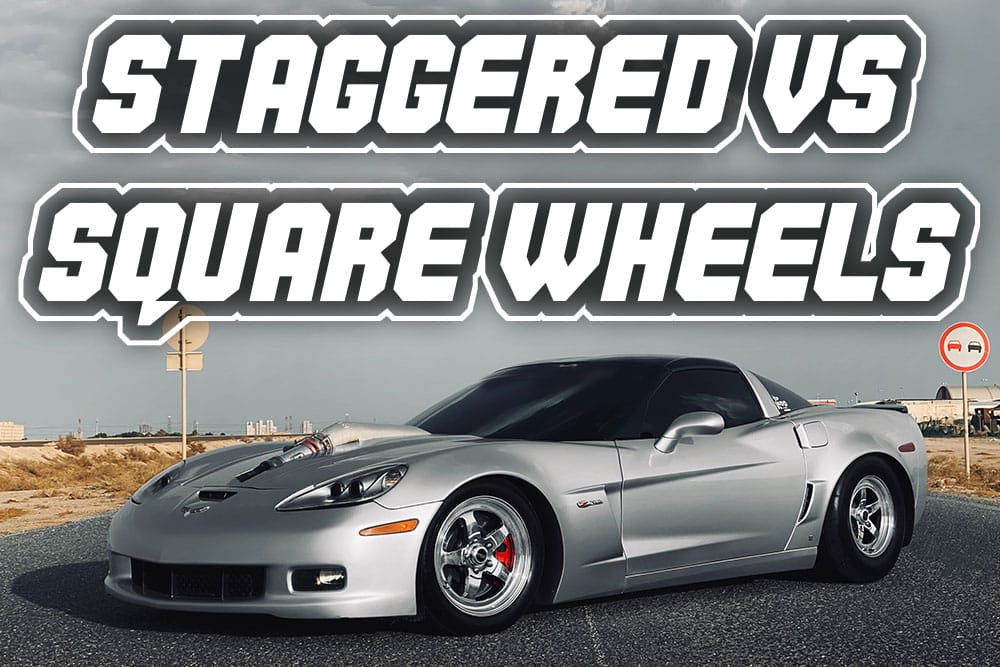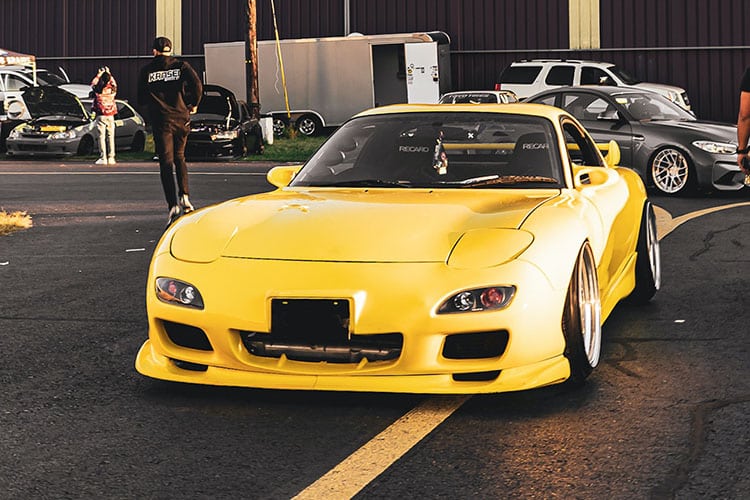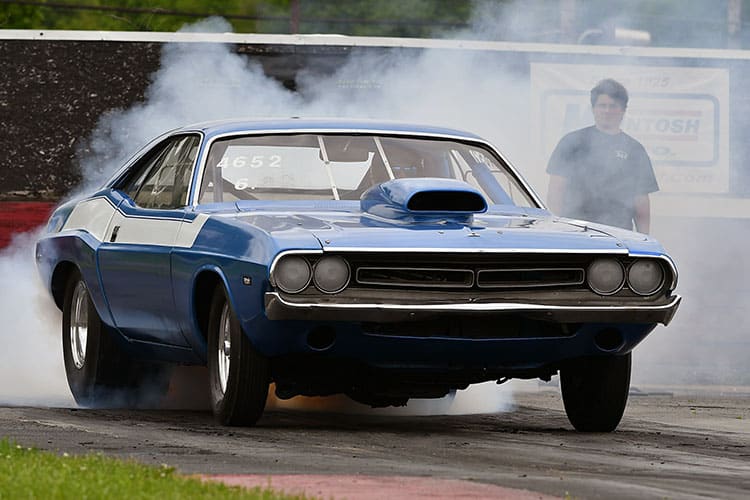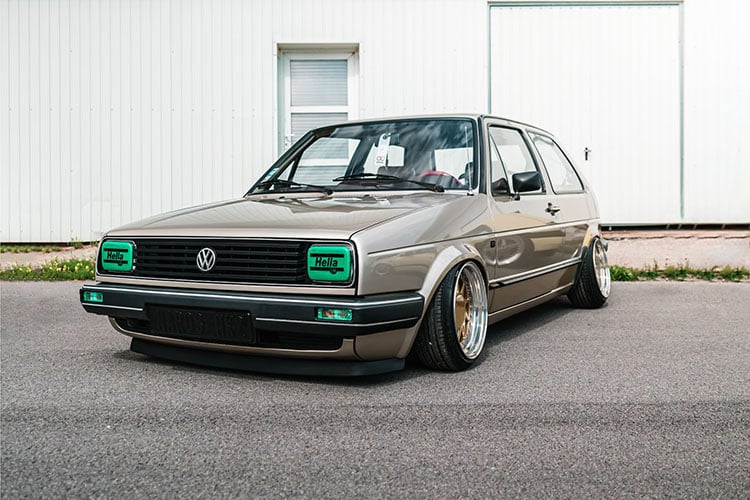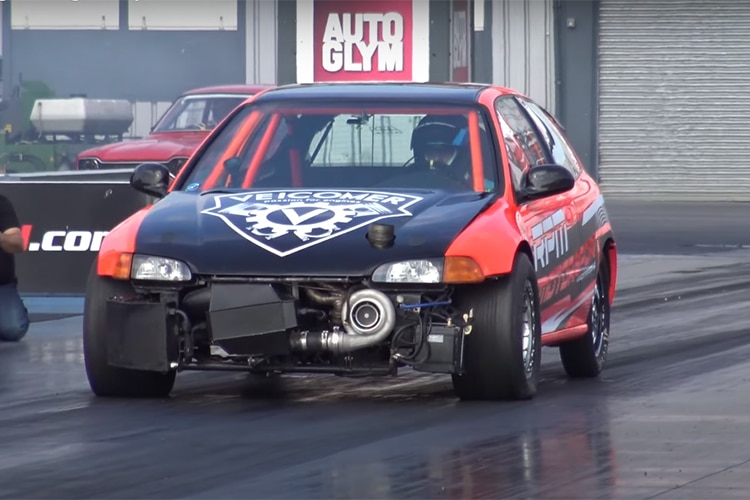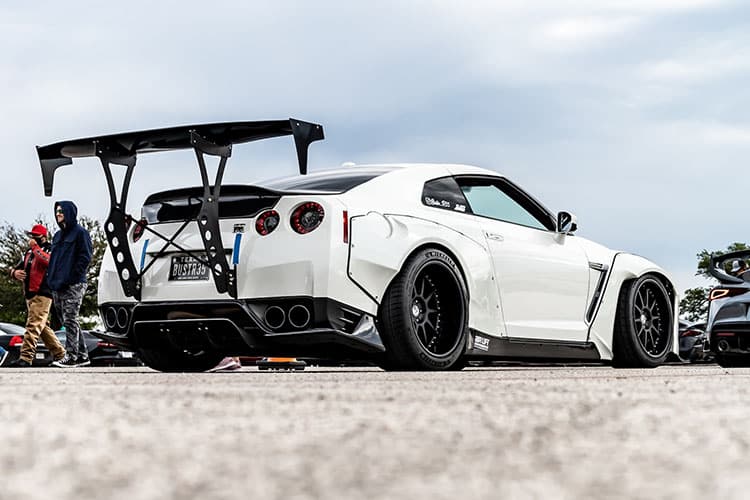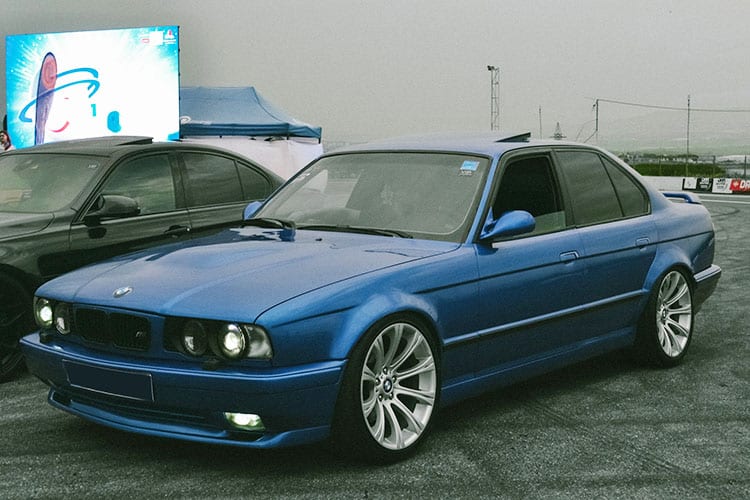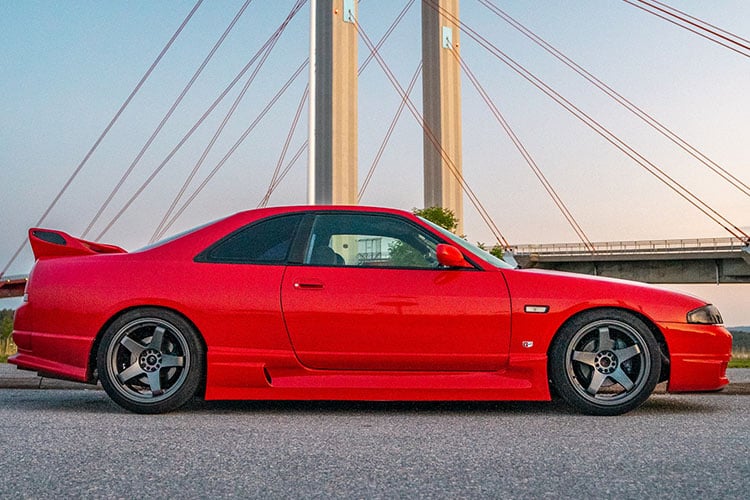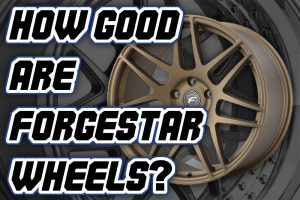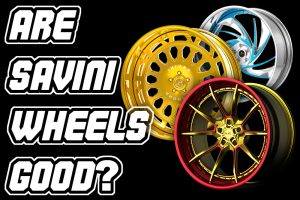The Ultimate Guide to Staggered and Square Wheel & Tire Fitment Setups
If you are looking into a new wheel and tyre setup for your car, you may have come across “staggered” wheels.
Many people install staggered wheel setups on their cars, but don’t exactly understand what the pros and cons of doing so are.
In this post, I’m going to explain exactly what a staggered wheel setup is, what a square setup is, and which you should choose for your car.
What Is a Staggered Rim & Tire Setup?
A staggered wheel and tyre setup is one where the wheels and tyres on one axle are a different size to the ones on the other axle.
This can refer to different wheel diameter, wheel or tyre width, wheel offset or a combination of these.
The most common staggered setup you will see is a wider rear wheel and tyre with a narrower front wheel and tyre, typically found on RWD cars. However, you will also find a range of other setups including larger diameter rear wheels or wider front wheels and tyres (most common on FWD drag cars – discussed a bit later).
Why Run Staggered Wheel & Tyre Fitment?
There are a number of reasons why you would want to run a staggered wheel setup.
The biggest reason is to run wider tyres in the rear to get more grip, in the case of RWD cars where all the power is being put down through the rear wheels.
Another big reason is purely for aesthetics, as many cars have more room in the rear to fit wider wheels. People like the look of wide and deep wheels so they go as wide as possible, which often means a wider rear wheel.
The Pros of a Staggered Wheel Setup
There are a number of benefits you get running staggered wheels, mostly for performance.
The number one reason for a staggered wheel fitment is to get more grip through the driving wheels. A staggered wheel setup allows you to run wider tyres on the driving wheels, usually the rear wheels on RWD car, which means you get more traction.
However, by running narrower wheels on the non drive wheels, you also reduce unnecessary drag, which helps to make the car faster than if you had wider wheels on the front also. This can help to squeeze out a little bit of extra performance and is often used in drag racing (the reason why many drag cars often have super skinny front tyres).
A staggered wheel setup will also change the handling characteristics of the car. Having wider rear wheels and tyres will typically increase understeer, which can be beneficial on certain cars that have a tendency to oversteer.
The Cons of Staggered Wheels
Unfortunately, there are some downsides to staggered wheels.
The biggest downside is that you can’t rotate the tyres, which means that they are likely to wear unevenly between the front and rear and typically wear out faster than if you could rotate them.
Wider wheels and tyres are also typically heavier, which can have an impact on both the performance and handling of the car and increase the MPG.
If you are installing wider rear wheels and tyres, you will also increase the car’s tendency to understeer, which can be a negative depending on what you are trying to achieve. This applies to all cars – FWD, RWD and AWD alike.
Staggered Wheels on RWD Cars
The most common application of staggered wheels you will see are on RWD cars, particularly sports cars.
Many high end sports cars come from the factory with wider rear wheels and tires to give you as much traction as possible to put the power down.
The extreme case of this is drag cars which have extremely wide rear tires and very skinny front tyres which are just enough to keep the car going straight while reducing unnecessary drag.
While wider rear wheels can increase the tendency to understeer, which is usually a bad thing, RWD cars typically tend to oversteer, so the wider rears can actually help to balance the car out and make it handle a bit more predictably.
Staggered Wheels on FWD Vehicles
When it comes to FWD cars, you will typically see two forms of staggered fitment:
- Stance cars with wider rear wheels
- Drag cars with wider front wheels and tyres, and skinny rear tyres.
On a FWD car, there are practically no benefit to putting wider wheels or tyres on the rear except for pure looks.
FWD cars tend to understeer as they are, and adding wide rear tyres will only make that situation worse.
However, many people do it for aesthetic reasons, and it is a very popular thing to do within the stance community to fit as wide wheels as possible.
When it comes to drag racing, you will see FWD cars, typically Hondas, with very wide front drag tyres and very skinny rear tyres.
This is to help get as much traction as possible to put the power down and reduce drag from the rear wheels which don’t help to move the car. It’s essentially the reverse of what RWD drag cars do and helps to increase the car’s ¼ mile time.
While the FWD drag car’s setup is extreme and won’t handle very well around corners, having wider front tyres would actually help to increase a FWD car’s tendency to oversteer, balancing out their natural tendency to understeer which can help with handling.
However, it can also make them unpredictable and susceptible to losing control, so it must be done with caution and balanced out with the rest of the car’s setup. This is why you typically don’t see this setup.
Can You Put Staggered Wheels on AWD/4WD Car?
One of the most common questions about staggered wheel setups is can you put them on AWD or 4WD cars?
Before I answer the question, I want to explain what the potential issues are so you understand how it all works.
AWD cars are usually designed to put an equal amount of power down to all four wheels.
In order to do this, they are designed to look for slippage between the wheels and try to minimize it, typically through a clutch type differential.
If you have different sized front and rear tyres, they will spin at different speeds, causing the AWD system to think that two of the tyres are losing grip. This will cause the differential to start gripping on the clutch to try and stop them from “slipping”.
This means that by driving with this setup, the differential is in a permanent state of trying to minimize what it thinks is wheelspin, and the clutch will got hot and wear out very quickly. It can also result in random power loss as the ECU cuts power to try and stop what it thinks is wheelspin.
This is why it is extremely important to ensure that the rolling radius of all of the wheels is the same.
So, to answer the question – Yes, you can run a staggered wheel setup on AWD and 4WD cars.
However!
You need to make sure that the rolling radius of all the tyres is the same. This means that you can run wider wheels and tyres on the front or rear as long as the overall diameter of the tyre the same. A good guide to use is to make sure they are all within 1% of each other.
An example of this would be a 225/40R18 and a 255/35R18.
The total diameter of the 225/40R18 is 637.2 mm.
The total diameter of the 255/35R18 is 635.7mm.
The total difference between these two is 1.5mm, or 0.2%. For all intents and purposes they are the same rolling diameter, so that setup would be fine to run.
Now, some AWD cars such as Porsches and Lamborghinis come from the factory with a staggered tyre setup with more than a 1% difference. In these cases, you typically have more room to work with, but try to keep it as close as possible to avoid risking problems with the differential.
Some Things to Consider On AWD Cars
Running a staggered setup on an AWD car, unless it came with one from factory, typically doesn’t lead to any performance benefit.
Putting wider tyres on the back of an AWD car will increase its tendency to understeer, which is usually not desirable.
Putting wider tyres on the front of the car can help to increase oversteer and improve cornering, but it is also likely to result in an unbalanced car that is not as predictable. The benefits of this could also be achieved by tuning the suspension and other parts that would give you a better result without the downsides.
What Is Square Wheel Fitment?
Now that we’ve covered staggered wheel setups, what’s the alternative?
A square wheel setup.
A square wheel setup means that you have the same wheel and tyre setup on all four corners of the car. The wheel diameter is the same, width is the same, offset is the same and the tyres are all the same.
This setup is often the best balance between performance, handling and tire life, as long as the tires are wide enough to give you the grip you need for the power the car makes.
Pros Of a Square Wheel Setup
A square wheel setup has several benefits over a staggered setup.
A square wheel setup tends to be more stable at high speeds, which is desirable if you are doing a lot of high speed straight line driving, such as on the highway or tracks with long straights.
With a square setup, you can also rotate your tires which will prolong their life and result in more even tire wear.
Cons Of a Square Wheel Setup
There are a couple of disadvantages to a square wheel setup which is why some cars have a factory staggered setup.
The biggest one is the fact that you may not be able to fit wide enough tires all round to get enough grip on the drive wheels.
This is typically an issue on RWD cars, where the rear can fit very wide tyres but front cannot due to the fact that the wheels turn and you would have rubbing issues.
In cases like that, you would have no choice but to run a staggered setup.
Another issue with a square setup is you can end up with less responsive handling and less steering feel due to the wider tyres at the front.
This can happen when you very wide all round, including the front and you get more grip but less feel. However, for most people this probably won’t be noticeable except for extreme cases.
Square VS Staggered Wheel Setup – Which Is Better?
The answer really depends on your particular car, what you are doing to use it for and your preferences and driving characteristics.
For road cars, a square setup is typically best as it will give you the longest tire life and be closest to what the factory designed – unless the car came with a square setup.
For track use, a square setup tends to also be the most balanced option unless your car has some specific requirements.
For drag racing, staggered setups work well and can be used on both FWD and RWD cars to get a little bit of extra performance.
In the end, it really does come down to the particular car and what you are doing with it.
- BC Racing BR Series VS Tein Flex Z Coilovers - April 15, 2024
- The Pros and Cons of Shock Body Vs Spring Perch Coilover Height Adjustment - April 13, 2024
- Monotube Vs Twin Tube Shocks: The Ultimate Guide - April 11, 2024

